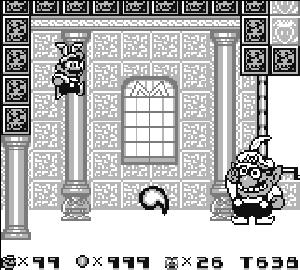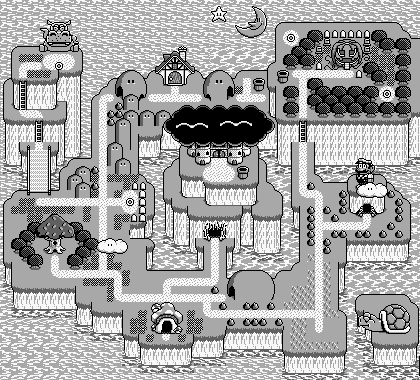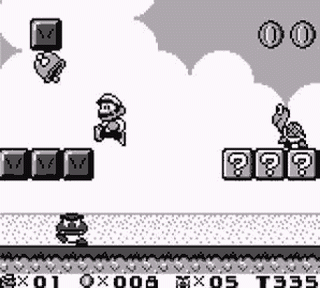Gaming has a rich history that spans multiple decades. To this end, The Last Word on Gaming Backlog is a series that looks back on titles across all generations. From the golden 8-bit era to the landscape-changing 64-bit scene and beyond, The LWOG Backlog’s aim is history.
Let’s take a look back at Super Mario Land 2: 6 Golden Coins, a Game Boy classic that introduced a new, nefarious character to the iconic series.
Super Mario Land 2: 6 Golden Coins: An Overview

Reclaim Mario Land
The original Super Mario Land was a landmark title for the Game Boy, though it wasn’t without its shortcomings. In the eyes of many, while it was functional, it felt rigid compared to traditional Super Mario titles. Additionally, with the quality of the Game Boy’s screen, ghosting was prevalent, especially when Mario was running at full speed. It didn’t help that Mario’s sprite appeared small on the screen. Simply put, this game was an idea that could have benefited from fine-tuning. Enter its sequel, Super Mario Land 2: 6 Golden Coins, which was released in Japan and North America in 1992 before arriving in Europe and Australia the following year. It was published by Nintendo and developed by its internal Nintendo Research and Development No. 1 Department.
Returning to the helm, for this project, was Gunpei Yokoi; in addition to his work on the original Super Mario Land title, he helped create countless Game Boy games, maximizing the capabilities of the system. Yokoi’s development team strived to create a game that wasn’t “bound by the conventions” of earlier Mario titles. Furthermore, it would mark the debut of Wario, a more rotund, sinister-looking version of the mustachioed hero. This was perhaps the greatest contribution of Super Mario Land 2: 6 Golden Coins. Wario’s debut aside, this is one of the must-play Game Boy titles.
Story
Super Mario Land 2 takes place following the events of the original title. While Mario was away from his private island, appropriately named Mario Land, mischief was afoot. Wario, an ill-tempered acquaintance of Mario, places an evil spell on the island and its inhabitants. It’s up to Mario to travel throughout the various areas of Mario Land, retrieve six of its Golden Coins, and ultimately confront Wario to reclaim his palace.
As was the case with the original Super Mario Land, 6 Golden Coins doesn’t feature a deep narrative. However, it is buoyed by the inclusion of a new antagonist. Unlike Tatanga, the final boss of the original title, Wario is more recognizable. Furthermore, the island of Mario Land is robust with character, which helps to move the story forward. Simply put, 6 Golden Coins doesn’t feature a deep story. With that said, it’s appropriate for this title in terms of its time of release and the platform in which it originated.
Gameplay

Compared to its predecessor, Super Mario Land 2 is more open-ended. The game is broken up into different themed zones, each housing a certain number of levels with each zone concluding with a boss fight. Furthermore, these zones can be played in any order and boast unique themes, allowing them to showcase their own character. Whether it’s the spooky Pumpkin Zone, the aquatic Turtle Zone, or Mario Zone, the latter of which sees the player traverse through a giant, mechanical Mario, there’s seldom a dull moment in Super Mario Land 2.
Throughout Super Mario Land 2, the player has access to a variety of power-ups. These include the Super Mushroom and Fire Flower, which have been franchise staples since the beginning. However, making its debut is the Magic Carrot, which transforms Mario into Bunny Mario, complete with the ability to hover using rabbit ears. This is a particularly useful power-up, especially as some levels can be completely bypassed by simply jumping from a reasonable height and hovering all the way to the goal.
This isn’t to say that the game is entirely a cakewalk. To reach the final area, which is Mario’s palace that has been taken over by Wario, the player must collect 6 Golden Coins. These are earned by defeating Mario Land’s various bosses. However, if Mario loses all his lives, the Golden Coins are returned to the bosses, at which point the player must reclaim them. Super Mario Land 2 isn’t the most difficult game in the series, but don’t be surprised to lose more than a few lives en route to the end credits.
Presentation (Graphics and Sound)

Graphically, Super Mario Land 2 is a considerable step up from the previous entry. The game’s sprites are large and detailed, which makes them easy to see on even the Game Boy’s small screen. Keep in mind that this does come at the cost of a decreased field of view, meaning that the player won’t be able to see as much on the horizon. Additionally, there are still instances of ghosting on the Game Boy screen. However, on modern devices with higher-quality screens, the latter won’t be a problem.
The soundtrack of Super Mario Land 2 is appropriately upbeat and whimsical, too. The “Athletic” level theme is perhaps the most recognizable, as it’s very reminiscent of first-level Mario tunes of the past. Super Mario Land 2’s composition can be credited to Kazumi Totaka, who has worked on multiple Nintendo titles throughout the years. From The Legend of Zelda: Link’s Awakening to Animal Crossing, Nintendo diehards have most likely heard his work at one point or another.
Replayability
Super Mario Land 2 isn’t a terribly long game, though it’s a more substantial adventure compared to its predecessor. Don’t be surprised to reach the end credits within four hours on a standard playthrough. However, to complete the game one-hundred percent, the player needs to beat different bonus levels. These are found by reaching alternative exits in other levels, going off the beaten path to do so. Additionally, as is the case with most Game Boy titles, Super Mario Land 2 is meant to be played in shorter bursts, so set expectations accordingly.
In Closing
Upon its release, Super Mario Land 2 was well-received, with critics praising everything from its presentation to its open-ended structure compared to the original Game Boy title. It would also go on to sell over 11 million units. It became one of the top ten best-selling titles on the portable platform, even outselling other Game Boy classics including Dr. Mario and Kirby’s Dream Land. Simply put, it was a money-maker.
Wario, who made his first appearance in Super Mario Land 2, would star in the sequel entitled Wario Land: Super Mario Land 3. This would eventually spawn the Wario Land series, which saw portable and home console entries alike. From there, the WarioWare series took shape, which remains his main franchise to this day. This wouldn’t have been possible without Super Mario Land 2, which remains a must-play Game Boy entry.
